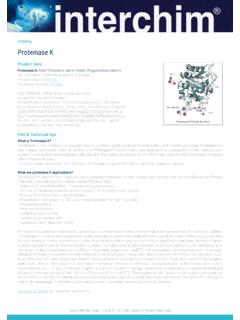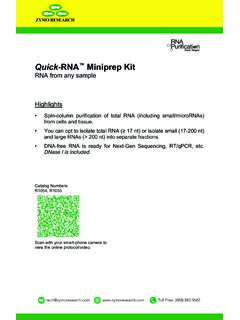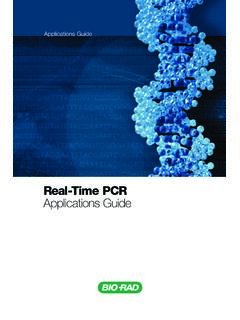Transcription of Banana DNA Extraction Lab - Mrs. Kornelsen's Classroom
1 1 Banana DNA Extraction Lab Objectives: Describe where DNA is located in a plant cell. Explain what procedures are required to release DNA from a plant cell Observe the Extraction of genomic dna from plant cells. Full of DNA What can we tell about the molecular structure of DNA by studying the characteristics of DNA when we purify it from bananas? Background: We will break open the cells of bananas and isolate the DNA form the rest of the cell debris. Bananas are a good source of DNA because some bananas are diploid (2 copies of each chromosome 22 chromosomes in total) and others are even triploid Banana (3 copies of each chromosome). You will never be able to eat a Banana again without thinking of how much DNA is in it!
2 Introduction: The process of isolating DNA from a cell is the first step of many laboratory procedures in biotechnology. The scientist must be able to separate the DNA from the unwanted substances of the cell gently enough so that the DNA is not broken up and sheared. A filtrate is made of bananas and treated with a buffer containing salt (NaCl) and distilled water.. The salt solution acts as a buffer to maintain a constant pH and binds up the positive ions to prevent enzymes (DNAses) from chewing up the DNA. The salt shields the negative phosphates of the DNA which allows these ends to come closer so that they can precipitate out of a cold alcohol solution. A detergent is added which causes the cell membrane to break down by emulsifying the lipids and proteins which allows the cell membrane to break apart.
3 Name: _____ My Mark: _____/15 Teacher Mark: _____/15 2 PRELAB: How do we isolate DNA? Take a look at the sketch of the plant cell below. The chromosomes (which are made of DNA) are in the nucleus. List in order all of the structures of the plant cell that we have to go through in order to get to the DNA in the nucleus. (2 marks) For each of the cell parts listed above complete the chart. (3 marks) Cell Part What is it made of? How can you break it down? 3 Student Protocol Equipment and Reagents for Extraction Buffer 20 mL DNA Extraction buffer (15 g NaCl/ 1 L water) 1 mL liquid dishwashing detergent Ice-cold 95% ethanol or 95% isopropyl alcohol 1/3 Banana Ziplock plastic bag Large Test tube Cheese cloth Glass rods 200 ml beaker elastic Procedure for Extraction Buffer 1.
4 Put 1/3 of a Banana into the ziplock bag, squeezing out all air 3. Gently mash the Banana to a pulp for 2 minutes 4. Open the bag and add 20 mL Extraction buffer into ziplock bag 5. Filter the mixture through a cheese cloth, save the filtrate (liquid coming through) 6. Pour 10 mL of the filtrate into a test tube. 7. Add 1 mL of detergent (this breaks apart the cell membrane and nuclear membrane). Gently mix with a glass stirring rod without causing foam. 8. Immediately add 20 mL of ICE COLD ethanol to the test tube by slowly pouring it down the side of the test tube to create a layer on top of the filtrate. (DNA is not soluble in ice cold ethanol. When it is added to the mixture, all the components of the mixture except DNA, stay in solution, while the DNA precipitates out.)
5 9. Let the ethanol sit of 2-3 minutes without disturbing it. Bubbles will form and DNA will precipitate out of the solution at the interface. 10. Gently swirl the DNA using a wooden splint. It will look like whitish mucous. 11. The DNA may be lifted out carefully and dried on an absorbent towel. 4 Questions: (1 mark each = 10 marks) 1. What was the purpose of mashing up the Banana ? 2. What does the Extraction buffer do? 3. What does the filter do? 4. What happened when you added the detergent to the filtrate? 5. What happened when you added the filtrate to the alcohol? 6. What did the DNA look like? 7. A person cannot see a single cotton thread four classrooms away. But if you wound thousands of threads together into a rope, it would be visible at the same distance.
6 How is this statement an analogy to our DNA Extraction ? 8. Is DNA found in all living or once living cells? 9. Since the bananas were once living, and we extracted DNA from them, what does this mean about the foods you eat? 5 10. Look at the plant cell pictured on this lab handout. Remember that genes are found on chromosomes, and genes control traits. Give at least two examples of traits that are expressed in the Banana .






